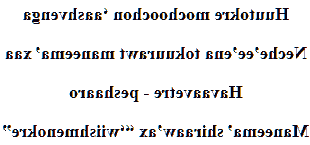Tongva love poem
Huutokre mochoochon ‘aashvenga
Neche’ee’ena tokuurawt maneema’ xaa
Havaavetre - peshaaro
Maneema’ shiraaw’ax “‘wiishmenokre”

Reverse translation
I see your face in the pool
This is my beautiful song
I hope you are quick it will leave
This one says I love you!

→ French poem ←
Gabrileno language & Tongvas
The Tongva language (Gabrielino-Fernandeño, Gabrieleño) was the Uto-Aztec (takic) language of the Tongva aboriginal Indians who lived in the Los Angeles Basin.
If I use the past tense (was), it is because this language is now extinct, but a process of revitalization is underway.
Although there has been very little work on their language, it is believed that it had at least four variants: Fernandeno, Gabrielino, and those of the islands of Santa Catalina and San Nicolas.
It was the Spaniards who, after creating the missions of San Gabriel and San Fernando, called their populations the Gabrielinos and the Fernandeños, and their language, the gabrielino-fernandeño. This name Gabrieleño, having been imposed, and therefore for them, carrying negative connotations, in 1992, they proclaimed themselves "Tongva".
Previously, to designate them, we find the words Kizh, Kij, Kumi, Tumamgamalum, Tumdmkawcum, Pase'k'arum.
The first contacts with the Spaniards (Juan Rodriguez Cabrillo) were in the middle of the 16th century. At the end of the 18th century, at the very beginning of Spanish colonization, there were about 5,000 people, and they occupied coastal southern California.
As everywhere else, the diseases (especially pox) brought by the Europeans, added to the killings, linked to the rapes of soldiers and forced conversions, quickly and drastically reduced their population. So much so that in the 19th century with their dispersal, they no longer existed as a group.
The Gabrielinos (Gabrileno, Gabrieleño, Fernandeño), were grouped in a hundred politically autonomous villages. They lived in houses large enough to host several families.
In the villages there was also a house where the men met, and another reserved for the women during their periods.
They worshiped the moon, the sun, and the god Chingichngish whose sanctuary was in the yuva'r, a sacred enclosure, right next to the chief's house (tumia'r). Only chiefs and shamans could enter the sanctuary.
It is Chingichngish, who after having created the Gabrielinos from mud, dictates their conduct.
The chief was most often the son of the previous one, but failing that, it happened to be a sister or a daughter. The most famous Tongva woman is Toypurina, who led a revolt against the Spaniards.
The role of the chief was to administer the community in its disputes, in its economy, in wars and he was the guardian of the sacred.
Shamans possessed the art of divination. As they conversed with the supernatural, knew how to create illnesses and heal them by both spirits and plants, they could be the ones with the most powers.
Nahuatl poem